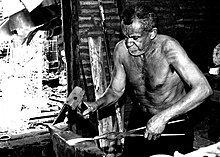History and Development of Pliers
– Pliers are an ancient invention, with no single inventor credited.
– Pliers likely developed from tongs used in Bronze Age Europe for handling hot metal.
– Plier-like devices have been used in metalworking processes for several millennia BCE.
– Greek god Hephaestus is depicted using pliers in his forge.
– The number of plier designs grew with the invention of objects they were used to handle.
Design of Pliers
– The basic design of pliers has remained largely unchanged since their origins.
– Pliers consist of handles, a pivot (often a rivet), and a head section with gripping jaws or cutting edges.
– Pliers are mainly made of steel alloys with additives like vanadium or chromium for strength and corrosion prevention.
– Handles of pliers are often fitted with insulated grips for better handling and protection against electric shock.
– Pliers come in various sizes, shapes, and jaw configurations for different manipulations.
Ergonomics and Specialized Pliers
– Research has been conducted to improve the design of pliers for easier use in difficult circumstances.
– Pliers handles can be bent to reduce muscle fatigue and align the load applied by the hand with the arm.
– Ergonomic design is important for factory workers to prevent carpal tunnel syndrome.
– Specialized pliers, like wiper pliers, are designed for specific tasks.
– The Pliers Wrench is a contemporary tool with high mechanical advantage parallel-gripping jaws.
Related Tools and Companies
– Nipper is a related tool often used for cutting wires.
– Parallel pliers generate more grip from friction on square and hexagonal fastenings.
– Tongs, pincers, and pliers are all hand tools used for holding and manipulating objects.
– Maun Industries is a company known for manufacturing pliers and other hand tools.
Additional Resources
– The History of Hardware Tools is an article that provides more information about the development of tools like pliers.
– Hand Tools: Tongs, pincers, and pliers. Encyclopædia Britannica is a reliable source for information on these tools.
– What are parallel pliers and how do they work? Maun Industries provides information about parallel pliers and their functionality.
– A Concise Dictionary of Greek and Roman Antiquities by Francis Warre Cornish is a book that mentions pliers in ancient times.
– Wikimedia Commons has a collection of media related to pliers, including images and videos. Source: https://en.wikipedia.org/wiki/Cable_cutter
This article needs additional citations for verification. (April 2009) |
Pliers are a hand tool used to hold objects firmly, possibly developed from tongs used to handle hot metal in Bronze Age Europe. They are also useful for bending and physically compressing a wide range of materials. Generally, pliers consist of a pair of metal first-class levers joined at a fulcrum positioned closer to one end of the levers, creating short jaws on one side of the fulcrum, and longer handles on the other side. This arrangement creates a mechanical advantage, allowing the force of the grip strength to be amplified and focused on an object with precision. The jaws can also be used to manipulate objects too small or unwieldy to be manipulated with the fingers.



Diagonal pliers, also called side cutters, are a similarly shaped tool used for cutting rather than holding, having a pair of stout blades, similar to scissors except that the cutting surfaces meet parallel to each other rather than overlapping. Ordinary (holding/squeezing) pliers may incorporate a small pair of such cutting blades. Pincers are a similar tool with a different type of head used for cutting and pulling, rather than squeezing. Tools designed for safely handling hot objects are usually called tongs. Special tools for making crimp connections in electrical and electronic applications are often called crimping pliers or crimpers; each type of connection uses its own dedicated tool.
Parallel pliers have jaws that close in parallel to each other, as opposed to the scissor-type action of traditional pliers. They use a box joint system to do this, and it allows them to generate more grip from friction on square and hexagonal fastenings.
There are many kinds of pliers made for various general and specific purposes.
